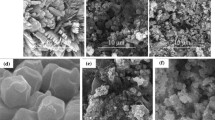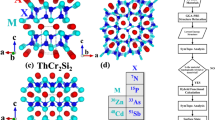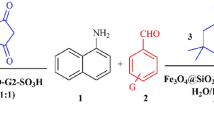Abstract
THE optical and decomposition properties of inorganic compounds can very often be changed by the introduction of small amounts of foreign cations or anions. For inorganic azides which decompose rapidly on heating, the usual method of incorporating impurities, which involves recrystallization from the melt, cannot be used. Gray and Waddington1 have reported on the properties of silver azide (AgN3) containing traces of the cyanamide ion, and this communication is concerned with the method and effect of introducing metal impurities such as cadmium into crystals of silver azide.
This is a preview of subscription content, access via your institution
Access options
Subscribe to this journal
Receive 51 print issues and online access
$199.00 per year
only $3.90 per issue
Buy this article
- Purchase on SpringerLink
- Instant access to full article PDF
Prices may be subject to local taxes which are calculated during checkout
Similar content being viewed by others
References
Gray, P., and Waddington, T. C., Chem. and Indust., 1255 (1955).
Evans, B. L., and Yoffe, A. D., Proc. Roy. Soc., A, 238, 568 (1957).
cf. McLaren, A. C., Proc. Phys. Soc., B, 70, 147 (1957).
Author information
Authors and Affiliations
Rights and permissions
About this article
Cite this article
YOFFE, A., EVANS, B. & DEB, S. Foreign Cations in Silver Azide. Nature 180, 294–295 (1957). https://doi.org/10.1038/180294a0
Issue date:
DOI: https://doi.org/10.1038/180294a0



